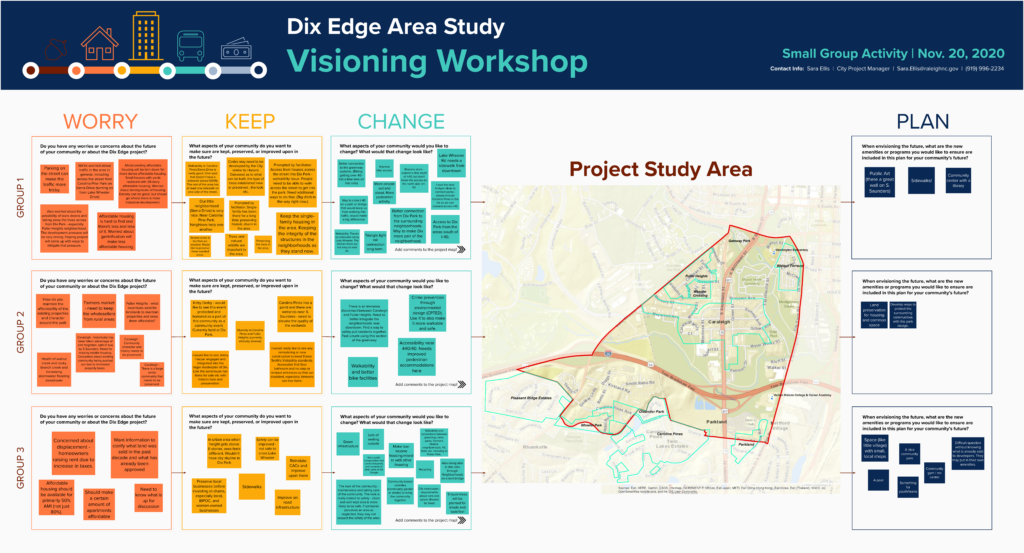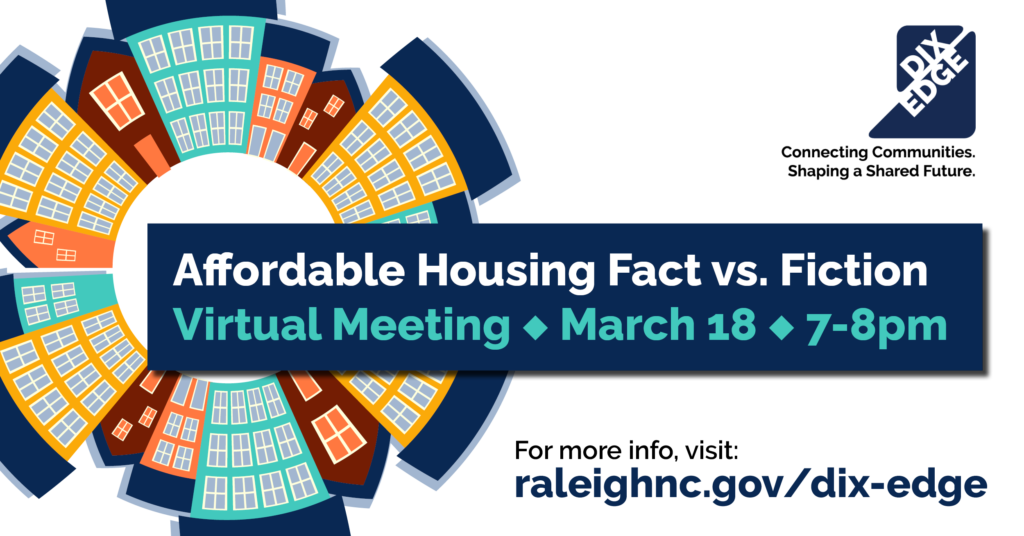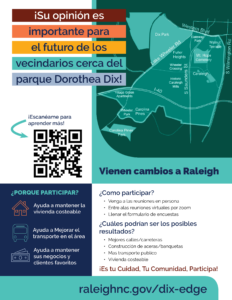Dix Edge Area Study
City of Raleigh | Raleigh, NC | August 2020 – present
Project Background
In 2015, the City of Raleigh acquired 308 acres of land to expand Dorothea Dix Park into a local and regional destination. This expansion, along with the development of Bus Rapid Transit (BRT) along Western Boulevard and the area’s designation as an opportunity zone, are likely to have short- and long-term impacts to the surrounding communities. The Dix Edge Area Study aims to identify the opportunities and challenges related to transportation, transit, and affordable housing in the area and develop policy direction to guide future changes to the area.
P3 Deliverables
As part of these efforts, P3 helped create selection criteria and training for two advisory groups: Community Leaders and Neighborhood Ambassadors. P3 developed and conducted a virtual orientation for both groups to provide training on community engagement best practices, social media outreach, and dealing with public emotions. P3 also developed a comprehensive training packet that included the materials covered in the orientation, as well as reference resources such as a frequently asked questions sheet with answers, a glossary of project and planning terms, and a study fact sheet.
To help create meaningful opportunities for the public to provide input in the Dix Edge Area Study, P3 implemented small group breakout room activities for the virtual meetings. These activities allowed participants to provide their feedback on the questions while facilitators posted sticky notes with their ideas to an online whiteboard. This allowed residents to see the way their messages were being understood and clarify any points they were making. Facilitators then shared out the results of the small group discussions to the larger group. The completed whiteboards were used to create meeting and comment summaries that were posted to the project website for those who were unable to participate to review. This process helped make the public engagement efforts of the project transparent to the public and the comments will be used to help in the creation of final recommendations for the Dix Edge study area.
Project in Process
Project Communications Examples




Date
August 01, 2020

